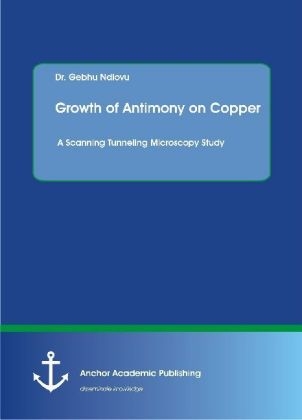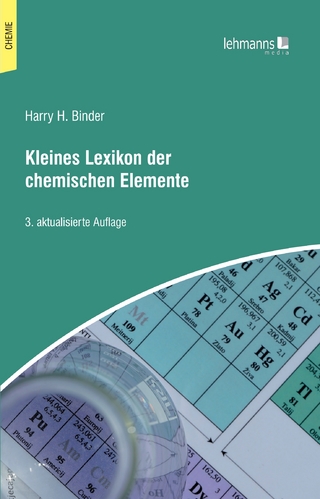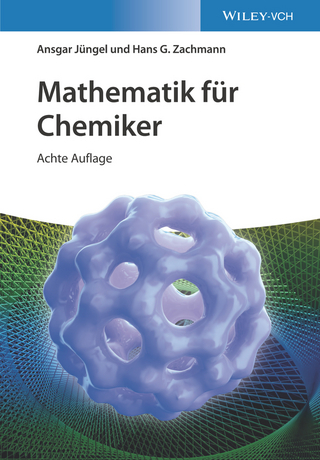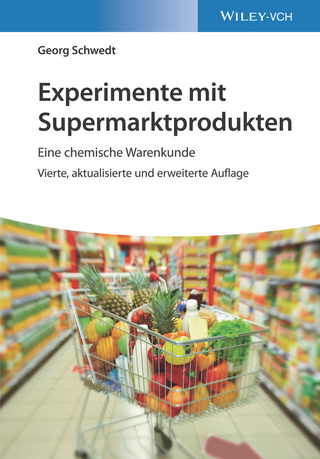
Growth of Antimony on Copper. A Scanning Tunneling Microscopy Study
Anchor Academic Publishing (Verlag)
978-3-96067-162-6 (ISBN)
The use of surface sensitive techniques in studying the surface alloy in question allows for more precise statements to be made about the surface structure of the system at various temperatures. Based on the experimental results, a comprehensive study of the adsorption and segregation behavior of Sb on Cu(111), including the mechanisms for phase formation at the atomic scale, is presented in this study.
Text Sample:
Chapter 3.8 STM Major Components:
To achieve atomic resolution with the STM, major challenges lies in the following formidable experimental problems: isolation of the experiment from natural vibrations of ~ 100 Hz that are present in every laboratory [36], tip to sample position control with sub angstrom precision, tip sharpness and quality of the sample surface.
3.8.1 Vibration Isolation:
Since tunneling current depends exponentially on the gap between the tip and the sample, thus as a rule of thumb, even minute vibrations, such as those caused by noise and people walking around the building can hinder the achievement of atomic resolution and the stability of the STM system. The typical corrugation amplitude for STM images is about 0.1 Å. Therefore, the disturbance from external vibration should be reduced to less than 0.01 Å [12].
To reduce the influence of external vibration when designing the instrument, Binnig and Röhrer employed a vibration isolation system which utilizes soft metal springs with resonance frequency smaller than the frequencies coming from the surrounding and permanent magnets [22,37]. The principle is based on eddy current damping mechanism. As the magnets (fixed on the STM stage) move relative to a conductive block of copper, eddy currents are induced in the metal [12,37]. A magnetic field caused by these currents acts oppositely on the magnets/STM stage and dampens its motion in all directions.
3.8.2 Electronic feedback control system:
The key to scanning tunneling microscopy is the control of the position of the tip probe with respect to the sample surface. To address the complexity of control and scanning movement of the probe tip in three spatial dimensions defined in figure 3.1(a), the tip is mounted on a piezoelectric tube scanner that can be driven with high accuracy by electronic feedback control system [37]. Other functions of the electronic feedback control system includes ensuring the presence of a tunneling current between the tip and the sample surface, acquisitions of surface structure data and interfacing with the computer controller in order to store and analyze the acquired data.
3.8.3 The STM Tip:
The STM tip geometry (sharpness), shape (mechanical rigidness), and chemical composition (cleanness) are the key features which determine lateral resolution and reproducibility of STM scans [38-41]. In order to resolve small features such as atoms at the surface of a sample, it is necessary to utilize a probe tip ideally comparable in size to the features at the surface [41].
The electrical characteristics of the tip as well as the environment where it will be used (ambient or vacuum) should be taken into consideration when selecting the tip material. Transition metals are superior candidates because their d-band electron orbitals are more pointed than the s-, p-, or f-band orbitals and thus the tunneling current is predominantly contributed by the d state [42,43]. Tungsten is very hard, has high electrical conductivity and it can be easily electro-chemically etched in KOH or NaOH solutions to a fine point [44,45]. In UHV conditions, tungsten (W) tends to fit the necessary requirements for a probe tip and is commonly used in STM measurements.
3.8.4 Images and Filtering:
In STM images, the spatial variation of the tip-height or the strength of the tunneling current is represented by a colour-coded contrast. When measurements are taken in constant current mode, the contrast refers to the spatial variation of the z-height of the tip, and such an image is called the height image. For operation in the constant-height mode, the image contrast refers to the spatial variation of the strength of the tunneling current. The acquired images are dubbed current images and often exhibit a higher contrast of the morphological and atomic-scale details than the height images. However, the latter provide more correct topographic information. In this work, intensity scale images of bo
| Erscheinungsdatum | 04.03.2022 |
|---|---|
| Sprache | englisch |
| Maße | 155 x 220 mm |
| Gewicht | 251 g |
| Themenwelt | Naturwissenschaften ► Chemie ► Allgemeines / Lexika |
| Schlagworte | adsorbate • Auger electron spectroscopy • Current imaging tunneling spectroscopy • Diffusion • Highly oriented pyrolytic graphite • Low Energy Electron Diffraction • Monolayer • nanostructure • Organized growth • superstructure • surface reconstruction • Surface sensitive |
| ISBN-10 | 3-96067-162-8 / 3960671628 |
| ISBN-13 | 978-3-96067-162-6 / 9783960671626 |
| Zustand | Neuware |
| Haben Sie eine Frage zum Produkt? |
aus dem Bereich


